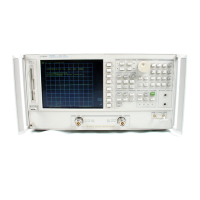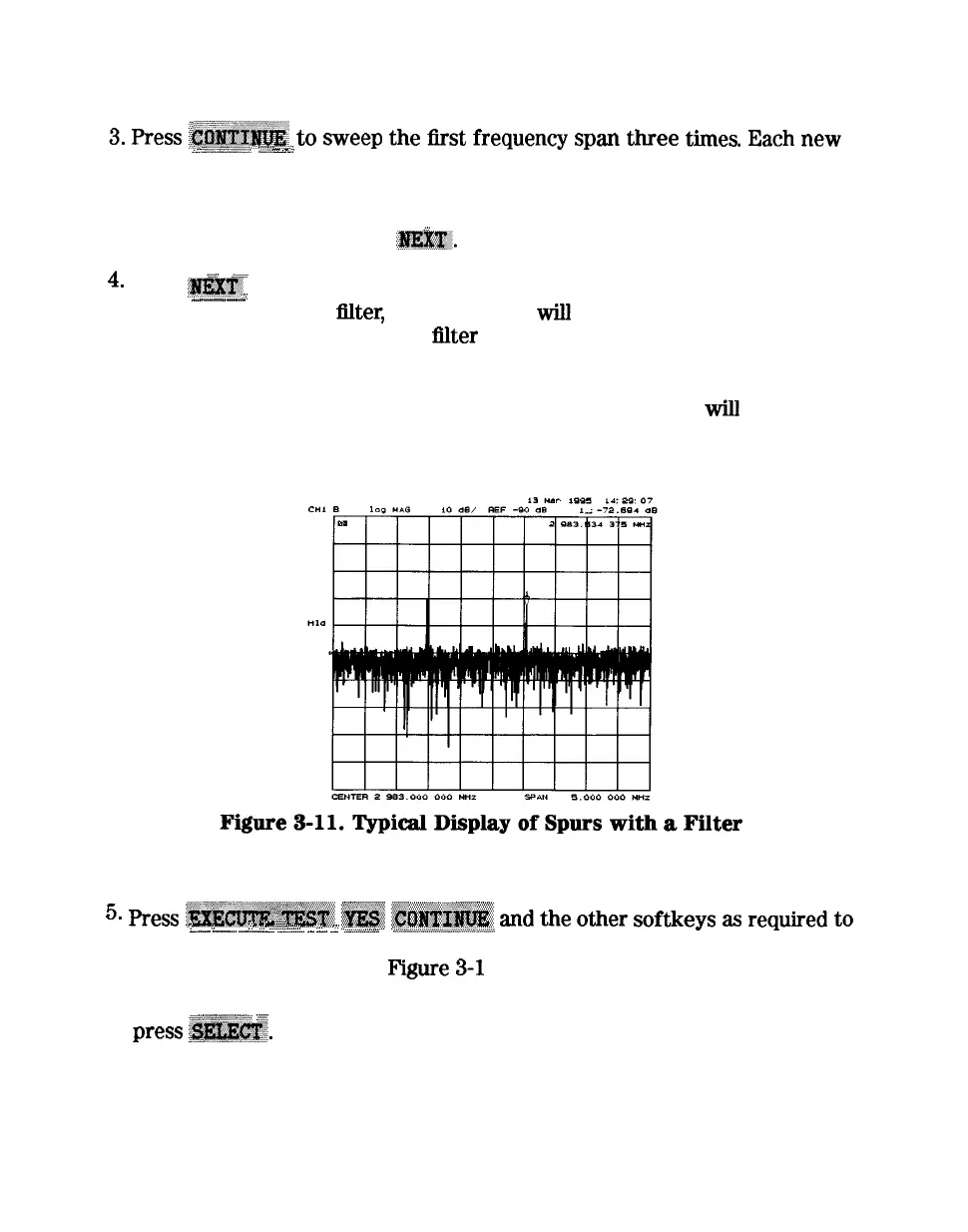3.
Press
.~~~~~~,:
to
sweep
the
first
frequenw
span
three
times.
Each
new
2
/.
.:~...=.:..:..:..~.=;~~.....
.-:.;.:
.
.
.
.
.
.
.
>
.
.
.
.
.
.
.
.
<.
span overlaps the previous span by 3 MHz (the center frequency increases
by 2 MHz; the span is 5 MHz). Therefore, anything visible on the right half
of the screen of one set of sweeps will appear on the left half or center of
,...
the screen when you press
:#XEg.
. . . . .
_
_
4.
Press
#jTX~
repeatedly. Watch the trace on each sweep and try to spot the
.i
^................
-.._
target spur With the
Alter,
the target spur
will
be one of two obvious spurs
(see Figure 3-11). Without the
alter
(not recommended), the target spur
will be one of four or five less distinct spurs as shown in Figure 3-12 and
Figure 3-13. When the center frequency increases to 2994.999 MHz, and
you have not “selected” the target spur, Cav Osc Cor FAIL
will
appear on
the display.
Spur Search Procedure with a Filter
5.
press
~~~~
~~
~~~~~
and
the
o*er
softkeys
as
required
to
.:
i
..:
. .
...’
..E
i.......
...a
. .../
1.
-...-
.__..__.
-.-
.._.......
-
-
-
..~........Z.3...~.~
. . . . . . .
~.....~...~.................~...~.............~...~....
observe and mark the target spur The target spur will appear to the right
of a second spur, similar to Figure
3-l
1.
6. Rotate the front panel knob to position the marker on the spur and then
~-
y
press
;@&&$$f.
3-30 Adjustments and Correction Constants

